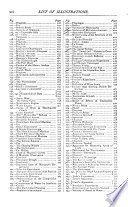 that every particle of matter in the universe attracts every other particle, with a force whose direction is that of the line joining the two, and whose magnitude is directly as the product of their masses, and inversely as the square of their distances... that every particle of matter in the universe attracts every other particle, with a force whose direction is that of the line joining the two, and whose magnitude is directly as the product of their masses, and inversely as the square of their distances...  Lessons on the globes - Page 214by T H. Howe - 1842Full view Lessons on the globes - Page 214by T H. Howe - 1842Full view - About this book
 | Simon Newcomb, Edward Singleton Holden - Astronomy - 1879 - 534 pages
...NEWTON was able to formulate his great law of universal gravitation iu these comprehensive words : " Every particle of matter in the universe attracts every other particle with a force directly as the masses of the two particles, and inversely as the square of the distance which separates them.... | |
 | Simon Newcomb, Edward Singleton Holden - Astronomy - 1880 - 542 pages
...NEWTON was able to formulate his great law of universal gravitation in these comprehensive words : ' ' Every particle of matter in the universe attracts every other particle with a force directly as the masses of the two particles, and inversely as the square of the distance which separates them.'1'1... | |
 | John McGovern - Encyclopedias and dictionaries - 1880 - 762 pages
...Astronomer, who immediately recognized and promulgated the law of Universal Gravitation, as follows : " Every particle of matter in the Universe attracts every other particle with a force proportional to the quantity of matter contained in each, and decreasing inversely as the squares of... | |
 | Edward John C. Morton - 1880 - 58 pages
...satisfies the facts. | V. — Of the verification of the Law of Gravitation. 1. The Law of Gravitation. Every particle of matter in the Universe attracts every other particle with a force varying directly as the product of their masses, and inversely as the square of the distance between... | |
 | George Minchin Minchin - Statics - 1880 - 568 pages
...POTENTIAL. SECTION I. Solid Distributions of Matter in General. 241.] Universal Law of Attraction. Every particle of matter in the universe attracts every other particle with a force whose direction is that of the line joining the two particles, and whose magnitude is directly proportional... | |
 | Simon Newcomb, Edward Singleton Holden - Astronomy - 1881 - 544 pages
...NEWTON was able to formulate his great law of universal gravitation in these comprehensive words : " Every particle of matter in the universe attracts every other particle with a force directly as the masses of the two particles, and inversely as the square of the distance which separates them."... | |
 | Robert Routledge - Science - 1881 - 748 pages
...all physical laws was finally deduced by Newton, namely, the Law of Gravitation, which affirms that every particle of matter in the universe attracts every other particle with a force which is inversely proportional to the squares of the distances between them. Newton demonstrated that... | |
 | Edmund Ledger - Astronomy - 1882 - 490 pages
...one•half of that for Mticury. century, subsequently discovered the great law of gravity, viz., that every particle of matter in the universe attracts every other particle with a force which is proportional to the inverse square of their distance apart, he showed that two other laws... | |
 | Edward John Chalmers Morton - Astronomers - 1882 - 370 pages
...unquestionably the most remarkable discovery ever made by the mind of man. It may be stated as follows : — " Every particle of matter in the universe attracts every other particle with a force varying directly as the product of their masses and inversely as the square of the distance between... | |
 | William Hewitt - 1882 - 254 pages
...to 16 times its former amount. The law of gravitation may now be stated generally as follows : — Every particle of matter in the universe attracts every other particle with a force proportional to the product of their masses, and varying inversely as the square of their distance... | |
| |